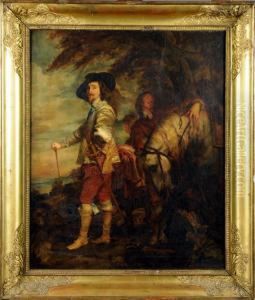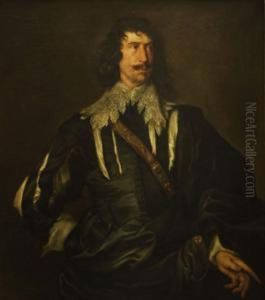Jacobus Van Dyck Paintings
Jacobus Van Dyck was a Dutch painter active during the 17th century, particularly known for his contributions to the Baroque period. Born in 1610 in the Netherlands, not much is documented about his early life or artistic training. It is believed that he may have been a student or follower of the influential artist Anthony van Dyck, despite there being no familial relation. The similarity in their last names has often led to confusion, but they were indeed separate individuals with distinct artistic styles and careers.
Van Dyck's work is characterized by its dramatic use of light and shadow, a hallmark of the Baroque style. His subjects often included religious scenes, portraits, and genre paintings. Despite the lack of extensive records on his life, his paintings suggest that he was well-versed in the artistic trends of his time and that he had a strong grasp of the emotional and dynamic capabilities of his medium.
Jacobus Van Dyck’s career spanned a period of significant change in the art world, as the Baroque style gave way to the beginnings of Dutch Golden Age painting. This was a time when artists began to focus more on realism and the depiction of everyday life. However, Van Dyck remained largely true to the Baroque sensibilities throughout his career.
The exact date of Jacobus Van Dyck's death is not well-documented, but it is believed that he was still alive in 1652, as indicated by the date on one of his last known works. Since there are no known works or records after this year, it is presumed that he died sometime shortly thereafter. Despite the scarcity of information about his life and the overshadowing fame of Anthony van Dyck, Jacobus Van Dyck’s contributions to Dutch painting and the broader Baroque movement remain appreciated by art historians and enthusiasts alike.

